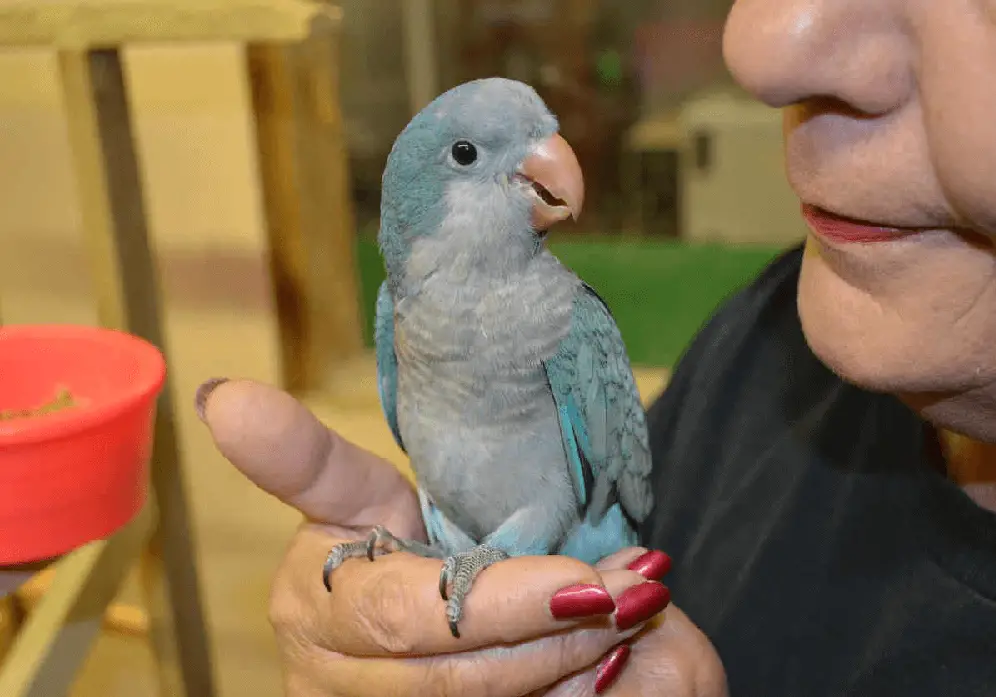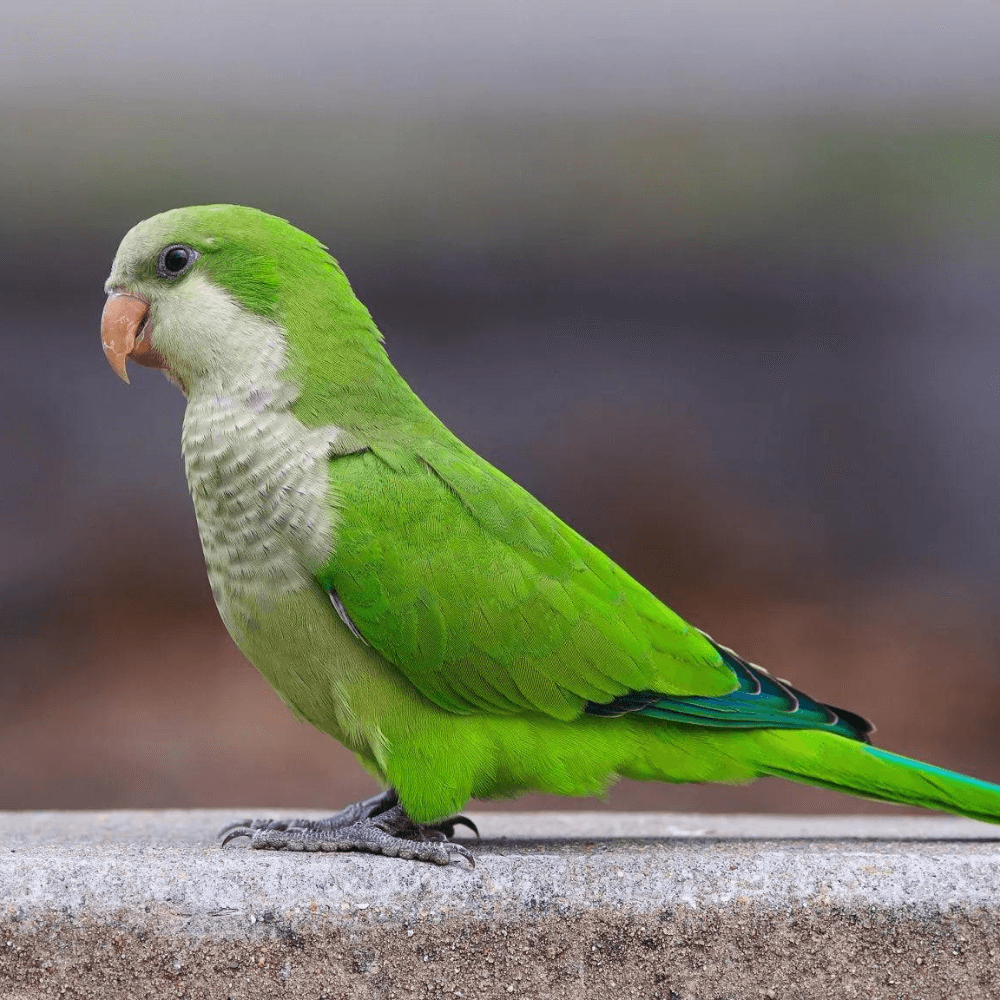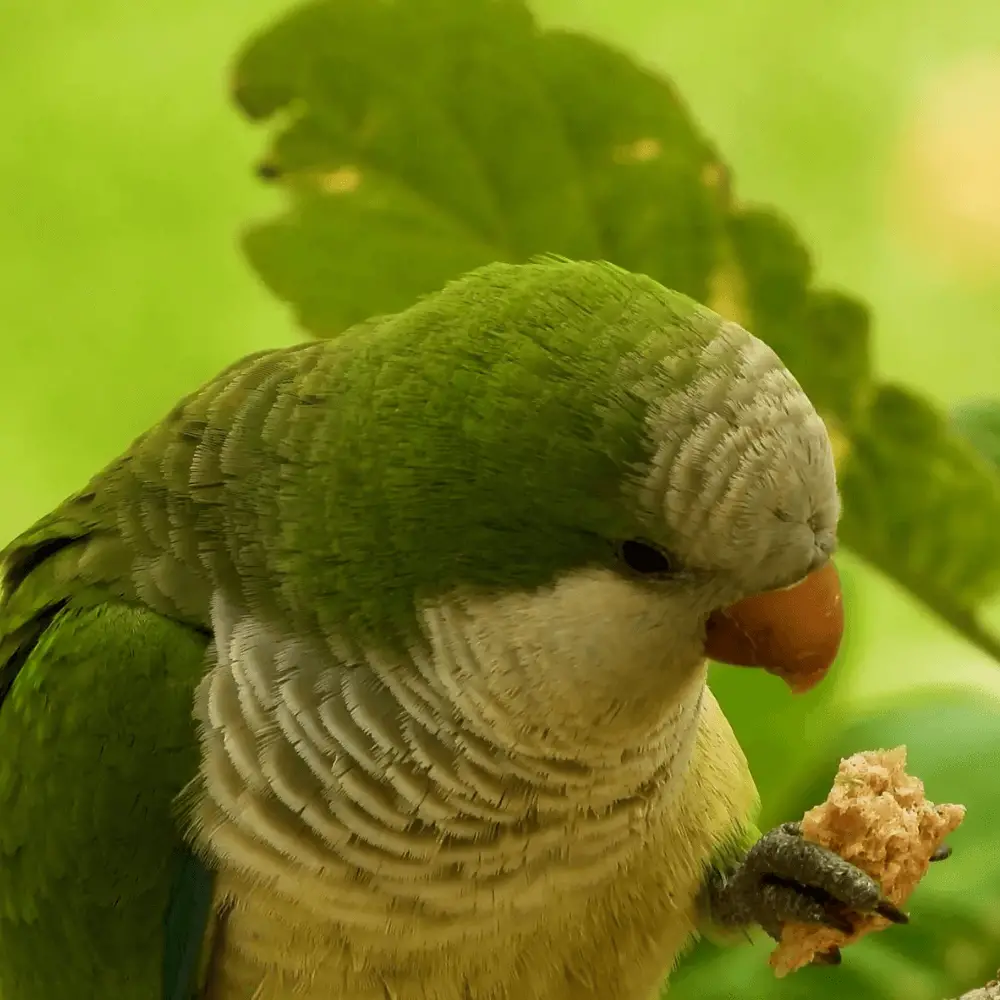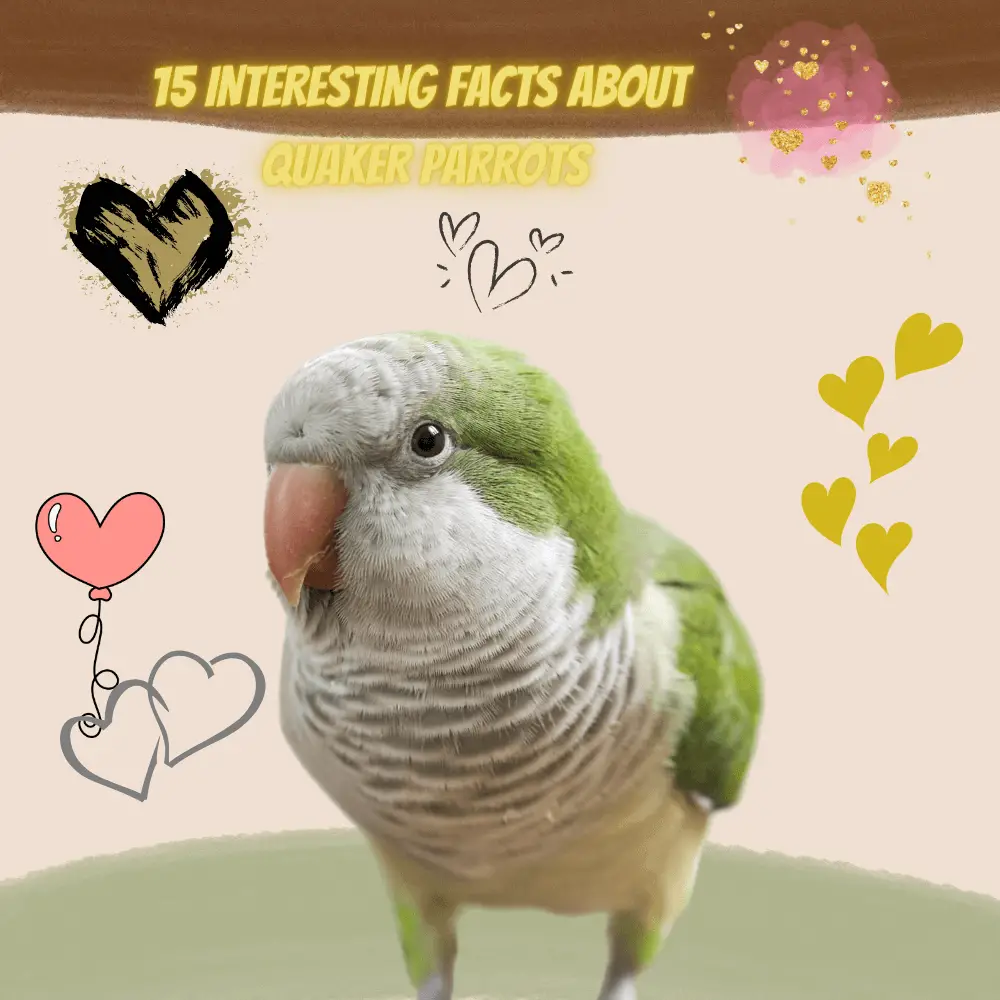15 Interesting Facts About Quaker Parrots: The Quaker Parrot is one of the birds that have a lively personality, and it is one of the famous pets all over the world. it is a strange, intelligent, amusing, and interesting parrot.
The Quaker parrot is often called the clown parrot, the monk parakeet. it is famous for its comic personality Fun-loving and active nature, and before bringing it into your home it is important first to fully understand this charming type of parrot, and with us, you will learn all about this intelligent parrot with these Interesting Facts About Quaker Parrots.
Quaker parrot names
While it is often called the Quaker parrot, this wonderful bird has some alternative names. You will often hear the species referred to as the Quaker Parakeet, or Monk Parakeet. Some people say that the monk Parakeet got its name because of its color.
The gray on the front of its neck resembles an old-fashioned apron (people also say that the name monk came from the color that appears on top of the bird’s head like a monk’s cap), but most people attribute the name Quaker to the bird’s distinctive twitching movements, and the quaker parrot sways and wiggles in a unique way Especially when excited or angry, youngsters often shiver when asking for food.
Quaker parrot lifespan
Like many types of parrots, the Quaker parrot can enjoy a particularly long life in captivity, with an average lifespan of between 20 and 30 years, but with good care, some types of Quaker parrot can live for more than From 30 years old, and if you are considering a Quaker, make sure you have a plan in place to care for the bird throughout its life.
Quaker parrot personality
 15 Interesting Facts About Quaker Parrots
15 Interesting Facts About Quaker Parrots
Quaker parrot is a very social species that are closely related to each other, and build nests for each other to form communities, and they are very restricted to each other while raising the young and helping their parents feed their younger brothers, and the parrots love to live in large flocks and migrate Together, they communicate through visual, auditory, and tactical cues to keep all members intact.
Quakers are social birds that form strong bonds with their owners, and as a result, when people have to give them up, they have difficulty adjusting to moving from house to house, there are feeling ignored, or Depression When he loses their home, can become aggressive or engage in unhealthy behaviors such as feather picking.
It is famous for being a friendly companion, and these birds are excited during the breeding season these behaviors appear more often than usual, however, they can also become defensive and violent if they realize a threat to their territory and love for their home is the reason why they hate a parrot Quaker to change owners.
Quaker parrot talking
If you are looking to adopt a parrot that can talk, it might be on your mind. The Quaker Parrot is famous for its exceptional ability to imitate human speech. Not only can it learn a diverse vocabulary of words and sounds but it also tends to be able to speak very clearly and often rival larger parrot species in terms of clarity.
While not every Quaker is guaranteed to be a talker, individual birds have greater odds of excelling at imitation than many other species. In general, many owners say that Quakers are a little talkative when it comes to imitation, as well as their natural communication, and usually not It annoys the neighbors because it doesn’t have the cries of some other species like the conure, but it will make its presence known in the house.
Quaker parrot size
 15 Interesting Facts About Quaker Parrots
15 Interesting Facts About Quaker Parrots
Some people may be deterred from adopting parrots because they assume that they are all large birds that need a lot of space, however, the Quaker parrot is only one of many species of medium-sized parrots that proves this idea wrong, and it reaches a length it is about 11 to 12 inches long and weighs only 3 to 5 ounces, and although all birds need a spacious enclosure as well as space outside the enclosure to play, the monk Parakeet and similarly sized species can do well with less than Large birds such as macaws.
Make sure his habitat is sturdy and bird-safe as these birds are known to chew and learn how to open cage doors. He also tends to have a strong nest-building instinct, so in addition to toys, provide him with bird-safe materials from which he can build a nest if he wishes in that.
Quaker parrot diet
 15 Interesting Facts About Quaker Parrots
15 Interesting Facts About Quaker Parrots
like some other types of parrots such as cockatoos and Amazons, the Quaker parrot tends to gain weight if, in addition to the high quality, his diet is not monitored grain mix and healthy seeds and you can offer fresh vegetables, fruits, and nuts, and this simulates What he eats in the wild. An occasional sprig of millet is usually a good treat for a healthy parrot. But don’t over-fatten the bird with nuts and seeds such as peanuts and sunflower seeds in its diet. These treats can cause rapid weight gain when given excessively.
Quaker parrot breeding
The Quaker parrot generally matures in two years, but some of them mature early, and the Quaker parrot mates from October to January and the ovulation period for the female is from 6 to 10 weeks, and she lays between 4 to 12 eggs, and the eggs hatch after 24 days, and changes Hormonal and odd behavior is normal during the breeding season, and they leave their nest at about 5 to 7 weeks.
Although the eggs will not be fertile without a male partner, a female Quaker parrot will lay eggs independently during the Quaker breeding season. Female parrots will go to great lengths to care for the eggs before they know they have been exposed. Damn, these facts about the monk Parakeet seem very surprising.
Quaker parrot nest
The Quaker parrot is the only bird that makes its nests supported by using branches, straw, and twigs, and there is a different place in its nest when the member is increased, and it adds space and builds a nest accordingly,
the Quaker parrot nests have a separate space for females to lay eggs, other Different rooms for young chicks, and other rooms to watch for predators or potential threats.
Quaker parrot is an invasive species
Quaker parrot is classified as an invasive species because it is disastrous for the agricultural sector, and they are very fast in increasing their population within a period of time and can disrupt the ecological balance leading to the extinction of some species under the availability of limited resources.
Quaker parrot color
The original or true color of the Quaker Parakeet is green and gray with pale gray cheeks and a blue-grey forehead. It has elegant blue flight feathers and a lighter green tinge on the underside of the tail. Due to breeding programs, different ranges of colors are available. Bred by a genetic mutation, they are in high demand and are sold at a high cost. Breeders have already created the Albino, Cinnamon, and Yellow Quakers.
quaker parrots differ only in coloration they share the same traits as blue quaker parrots, they have a light blue back, wings coming down to the tail with an orange-yellow beak, and a white ring with black eyes.
Quaker parrot illegal
 15 Interesting Facts About Quaker Parrots
15 Interesting Facts About Quaker Parrots
The Quaker parrot is known as an invasive species and is banned in many countries, it migrates with large flocks and also outperforms the species, Spain and Western Australia have banned the sale, purchase, and breeding of these birds, and it is illegal to keep Quaker parrots are found in several states of the United States and there are a set of conditions for some states, such as Ohio, where the pet parrots feathers are clipped to prevent flight.
Quaker parrot health
The Quaker parrot suffers from fatty liver disease and trauma, and the reason is excessive diet or an unbalanced diet, and during these times of anxiety, it shows strange behavior such as feather plucking and biting, and these birds are known to be carriers of the disease Parrots that cause respiratory problems, and some have grown beaks due to improper diet and bacterial or parasitic infections.
It is native to Argentina and neighboring countries in South America, where it inhabits subtropical regions. The monk Parakeet is very well adapted to urban landscapes. As a result, there are many wild populations in North America as well as in Europe.
Are Quaker parrots hard to take care of?
The Quaker is a very voracious bird, and will quickly chew and peck furniture, so provide plenty of chew toys and safe branches to avoid your parrot becoming bored and unhappy. Their destructive nature can easily be transformed into being friendly. Nesting, building an elaborate multi-chambered nest out of thousands of twigs woven into elaborate nests.
There are sometimes reluctant to nest in breeding boxes, although they are often reared in this way if twigs and other large nesting materials are provided, and lay six to eight eggs, although they have been known to lay up to 13 viable eggs. For one life at a time, it is said to live up to 30 years with proper care.
its loves spending time with its human owners and is known for its ability to talk. In captivity, it often bonds closely with one person. It is a very loyal pet, and most Quaker Parakeets that have been bred are very gentle and make great family pets.
Do all Quaker Parrots talk?
While not all Quakers are guaranteed to talk, individual birds have greater odds of excelling at imitations than many other species, and in general, many owners say that Quakers have a little babbling voice when it comes to imitation, in addition to its natural appeal.
Do Quaker parrots need baths?
Yes, parrots do get dirty, and they need to be kept clean to feel comfortable and promote good health. Most of our companion parrots are just generations from the wild, and a good bathing program can meet many of their natural needs and desires.
What is Quaker parrots favorite fruit?
As a captive bird, its main diet item should be a commercially made high-quality pellet mix, so offer a variety of fresh fruits and vegetables, leafy greens, nuts, and healthy table foods. Root vegetables, peppers, and colorful produce are essential in its diet.

